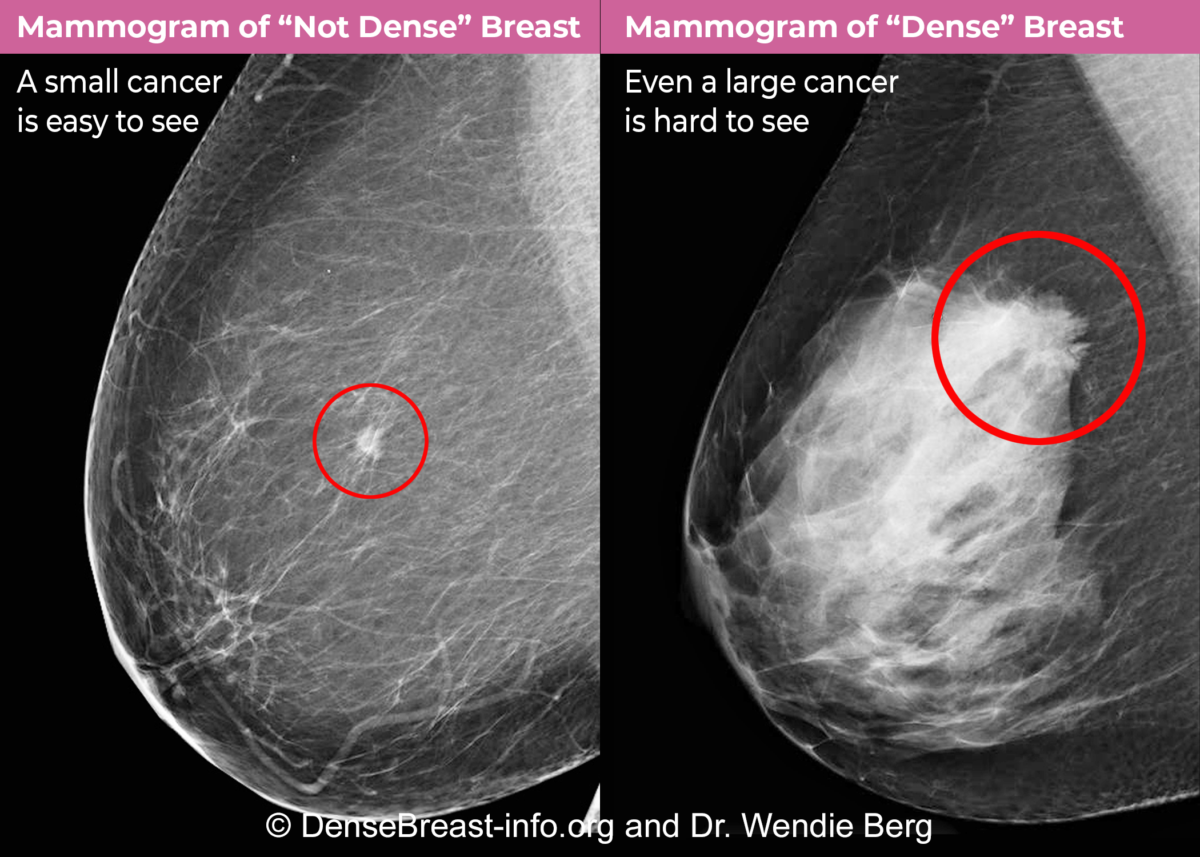Breast density. You may have heard about it on the news or saw the words on your recent mammogram report. But do you know what it is and why it’s important?
Updated U.S. Food and Drug Administration (FDA) regulations say that beginning next year, health care providers must include breast density data when notifying patients of their mammogram results.
Since greater breast tissue density has been linked with a higher risk for breast cancer, understanding your breast density can help you and your provider develop a personalized plan to achieve better outcomes.
What is breast density?
Breast density describes the ratio of the breast’s three main types of tissue: fibrous connective (that gives support), glandular (that makes milk), and fat. Breast density is a term that describes the amount of each of these tissues compared to one another. Dense breast tissue has higher amounts of fibrous connective and glandular tissue (also called fibroglandular tissue) compared to fat.
Is it normal?
Having dense breasts is completely normal and is quite common—almost half of all women ages 40 and over are found to have dense breasts on a mammogram. Breast density can change over time, and although breast density can increase during menopause through the use of hormone replacement therapy, more typically, breast density decreases as women age along with decreases in estrogen levels and increases in body weight.
Women who are pregnant or breastfeeding tend to have greater breast density (due to increased estrogen), and those with lower body weight tend to have denser breasts, as they have less fatty tissue throughout their body.
How can you tell if you have dense breasts?
Breast density cannot be determined by how your breasts feel or look, but can be seen on a mammogram, which is an x-ray of the breast. Both 2D and 3D (tomosynthesis) mammograms show dense areas of the breast as white, while areas that are less dense (or more fatty) appear dark.
Why does it matter if I have dense breasts?
Dense breasts can make it harder for the radiologist reading your mammogram to see breast cancer. This is because most often, breast cancer appears white on a mammogram. If breast cancer occurs in an area of dense breast tissue, which also appears white on a mammogram, the radiologist may miss it.
For reasons that are not well known, people with dense breasts have a higher risk of developing breast cancer as compared to those with less dense breasts. And that risk increases as the amount of dense breast tissue increases.
How can I learn how dense my breasts are?
In addition to cancer detection, mammograms also help determine whether the breast density category is:
- Mostly fatty: almost entirely fat with little fibroglandular tissue
- Scattered fibroglandular densities: mostly fat with scattered fibroglandular tissue
- Heterogeneously dense: many areas of fibroglandular tissue, which may obscure small masses
- Extremely dense: large amounts of fibroglandular tissue
The category of breast density is included in the report the radiologist sends to the health care provider who ordered the mammogram and they can share that information with you.
Some states require the facility where you had the test performed to notify you of your breast density—and thanks to updated FDA regulations issued in March 2023, this will be a national requirement by the end of 2024.
How can I change my breast density?
In most cases, you can’t do much to change your breast density. Weight loss (or gain) can impact your breast density as it may change the amount of fatty tissue in your breast, but the amount of fibroglandular tissue will largely stay the same.
What should I do if I have dense breasts?
Depending on the density of your breasts and your personal risk of breast cancer, your provider might recommend additional testing, such as breast magnetic resonance imaging (MRI) or breast ultrasound, to confirm cancer was not missed on the mammogram. It is important to remember: these tests do not replace mammography but help increase the chance of finding early-stage breast cancers in dense breasts. This is important because Early Detection = Better Outcomes.
October is Breast Cancer Awareness Month. Visit preventcancer.org/breast to learn more about breast cancer signs and symptoms and steps you can take to reduce your risk. To learn more about breast density, visit DenseBreast-Info.org.

No Comments